Original URL: https://www.theregister.com/2014/07/28/review_asus_memo_pad_7_android_tablet/
You didn't get the MeMO? Asus Pad 7 Android tab is ... not bad
Really, er, stands out among cheapie 7-inchers
Posted in Channel, 28th July 2014 09:01 GMT
Review What’s the best affordable 7-inch tablet? Surely it’s got to be either the Nexus 7 or the LG G Pad 8.3 or if the pair of them are too dear, the Hudl – right? Wrong.
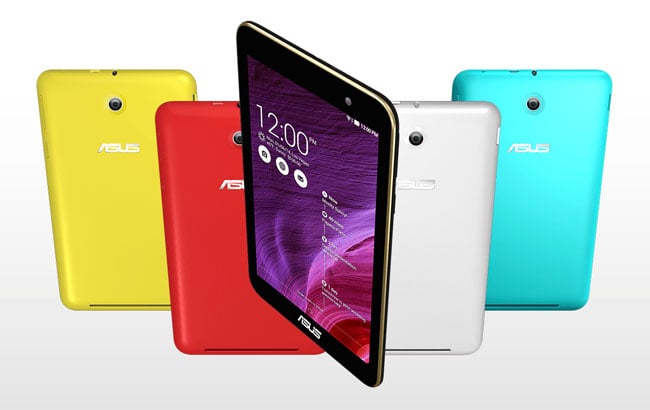
Asus MeMO Pad 7 Android tablet
Asus’s new £120 MeMO Pad 7 may not be better than the Google, LG and Tesco devices in all areas but, taken as a sum of its parts, it’s a superbly balanced gadget and, for the price, outstanding value for money. It’s also the first Intel-powered Android device you should actually want to own.
Let’s start with that chip. Powering the MeMO Pad 7 is a quad-core Intel Atom Bay Trail Z3745 CPU clocked at 1.33GHz but with a burst speed of 1.86GHz supported by 1GB of DDR3 RAM. This is the first quad-core Intel chip I’ve encountered in a mobile device and, my God, do those extra two cores make a difference. Make no mistake the MeMO Pad 7 is a seriously powerful bit of kit, price notwithstanding.
The AnTuTu benchmark score speaks for itself. At just under 34,000 it crushes both the quad-core 1.5GHz Krait powered Nexus and similarly clocked Rockchip driven Hudl, which turn in scores of around 20,000 and 18,000 respectively. The SunSpider browser test score of 705ms was no less impressive, ditto the 3DMark graphics benchmark.
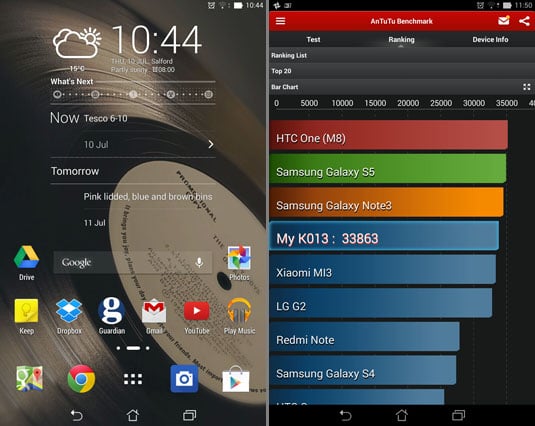
Homescreen and AnTuTu benchmark scores
There is one drawback to using a laptop chip in a tablet though - run a demanding game like EA’s Real Racing 3 or N.O.V.A. 3 and the MeMo Pad 7 gets quite warm.
Despite the benchmark scores being right up with the very best Android flagship devices the UI still isn’t as consistently super-fluid as it is on the likes of the Nexus 7, with the odd pause here and there before it gets its act together. These issues aside – which are no doubt born of having an OS designed for ARM running on x86 – the MeMO Pad 7’s UI is still by some way the smoothest I’ve encountered on an Intel-powered ’droid.
Where the Nexus, LG and even the Hudl have an edge over the MeMO Pad is with the display. There’s no problem with the basic quality of the screen, as the MeMO's IPS panel is actually pretty good. It’s bright and colourful with only a slight lack of saturation though that can be massaged by using Asus’ Splendid screen adjustment app.
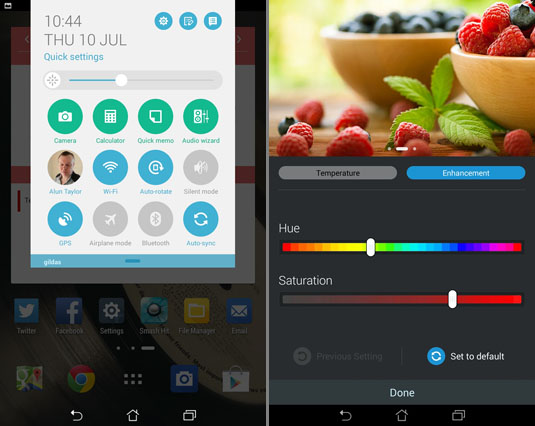
ZenUI quick settings and the useful screen adjustment options
Sure there are tweaks, but the real issue is lack of pixels. With only 1280 x 800 on offer, the MeMO Pad has a significantly lower pixel density (216dpi) than the Nexus 7 (323dpi), the LG (273dpi) or even the Hudl (242dpi). Raw numbers aside the MeMO Pad's screen actually looks pretty crisp to the naked eye so the low resolution is not what I’d call a deal breaker by any stretch of the imagination.
One curious omission from the MeMO Pad 7 though is the ambient light sensor. The upshot of this that there is no Auto setting for the screen brightness and the battery savings that can go with it.
Zen moments
Impressively, there's no sign of bargain basement build quality, something that couldn't really be said of the first generation MeMO Pad 7. The whole thing feels as solid as a rock while the screen is made from some sort of toughened glass. The nicely rounded matt finish rear is rather pleasant to the touch too.
Physically the new Asus is par for the 7-inch tablet course. At 113.7 x 189.3 x 9.6mm and weighing 295g, to all intents and purposes, it’s the same as the MkII Nexus 7.
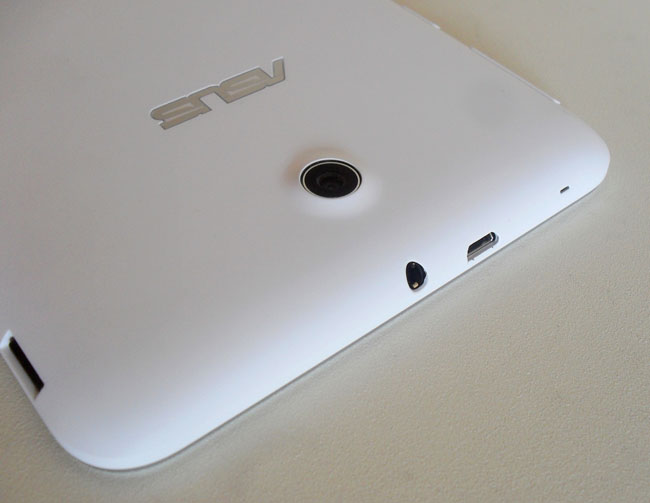
Slots and sockets
The only ergonomic hitch is the positioning of the power and volume buttons on the right. They are too much on the back rather than the side and don't fall easily to the touch, something exacerbated by the power button being below the volume rocker which feels the wrong way around to me. The memory card slot doesn't have a cover but cards slot far enough in for this to not be an operational problem.
The MeMO Pad apparently boasts two speakers (you can’t tell by looking) and they are both beefy little blighters and have a decent sized hole to play through, so sound is more than adequately loud and generally pleasant. For headphone users, the 3.5mm audio jack is at the top of the device next to the microUSB slot which is a sensible place to put both of them in my book.
The MeMO 7’s 3910mAh battery is a wee bit smaller in capacity than the Nexus 7’s 3950mAh cell, but the chipset and lower-res screen manage to eke more life from a full charge. Looping a 720p MP4 video with brightness and volume at 50 per cent drained the MeMO Pad in 9 hours 15mins, while the same test floored the Nexus 7 before it crossed the eight hour line.
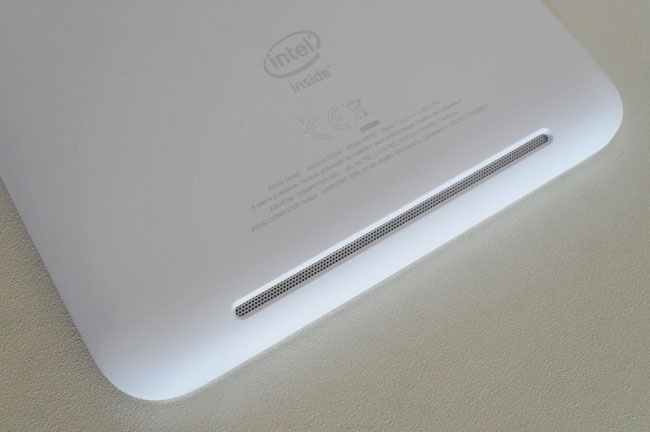
Two speakers, one grille and Intel inside
Another advantage the MeMO 7 has over the Nexus is storage. Granted it only comes in 8GB and 16GB flavours, but there is a memory card slot good for another 64GB and out-of-the-box support for USB On-The-Go hosting. While on the subject of connectivity, you also get Bluetooth 4.0 and 802.11b/g/n Wi-Fi at 2.4GHz. There’s no NFC chip but at the price that came as no shock.
Overlaying Android 4.4.2 is Asus’ new ZenUI launcher, and it's not a bad effort. It's light on its feet, easy on the eye and brings some handy widgets to the party like the What's Next widget that shows calendar events and the like on the home screen. ZenUI isn't ground breaking but it didn't have me running to the Play Store for a replacement either. Will the MeMO Pad 7 get an update to Android L? Yes. Do I know when? No.
On the photographic front, you get a 5Mp snapper at the back and a 2Mp unit at the front. There are a few built-in extras like digital image stabilisation and a best picture facility, all grouped under what Asus calls the PixelMaster system, which serves to boost the MeMO Pad’s photographic credentials above the mundane.
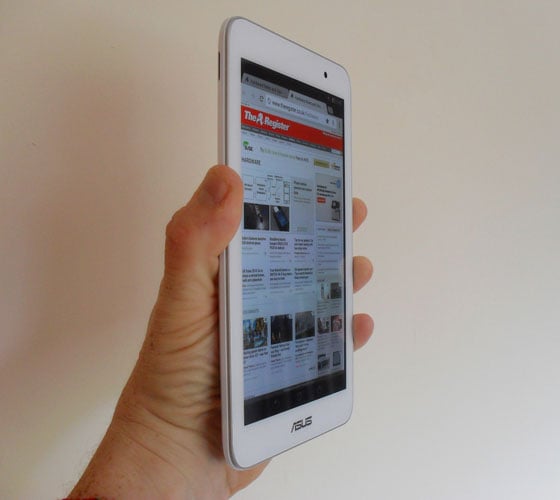
Fancy a hot 7-incher in your hands?
I took a quick snap inside the low-light interior of a private jet en-route to the BMW i8 launch and was pleasantly surprised how good the result was. Still, the apparent absence of autofocus (despite what the spec sheet says) puts the mockers on reading bar codes or shooting anything close up.
The Reg Verdict
At £120, what’s not to like about the new MeMO Pad 7? It’s powerful, well made, frugal with power and has a pretty good camera for a tablet. The only criticism you can really make is that the screen resolution could be higher but in everyday use, that wasn't a failing I noticed. Oh, and it runs a wee bit hot sometimes.
So, is the MeMO Pad 7 really the best affordable tablet you can buy? Yes: it’s much cheaper than the LG G Pad 8.3 or Google’s Nexus 7 and feels more grown up than the Tesco Hudl. ®